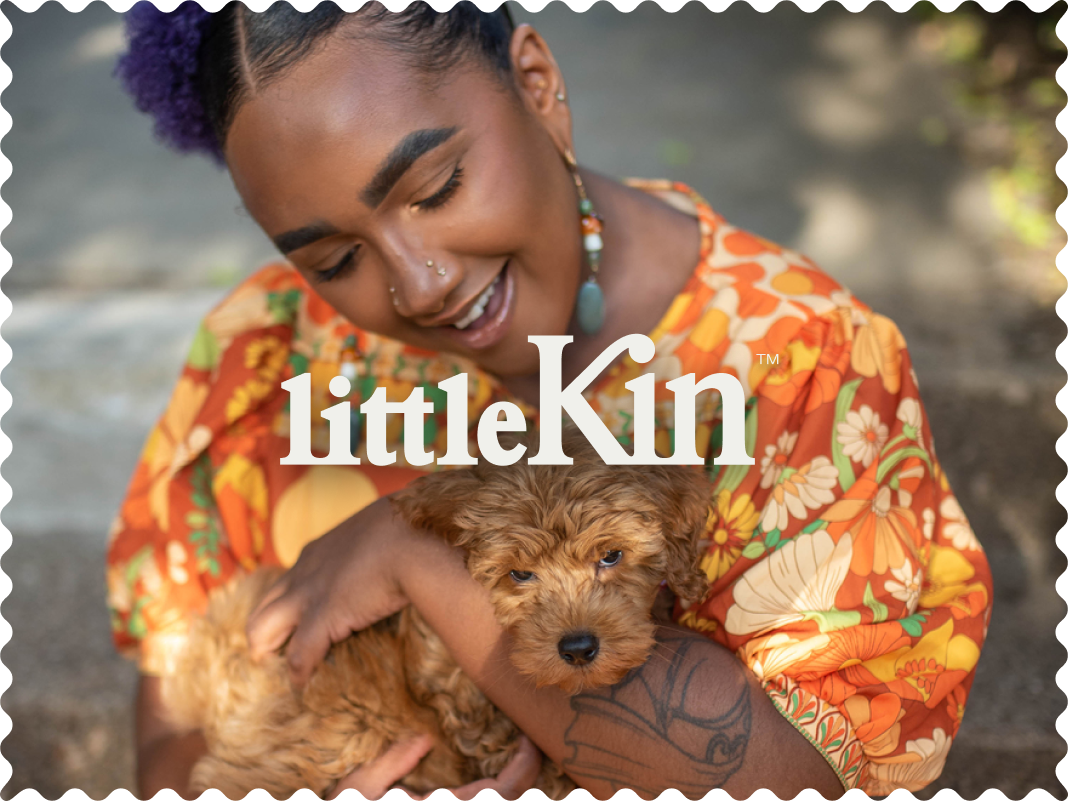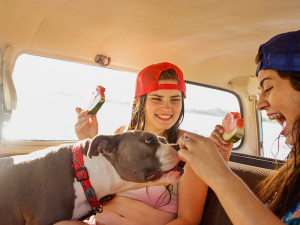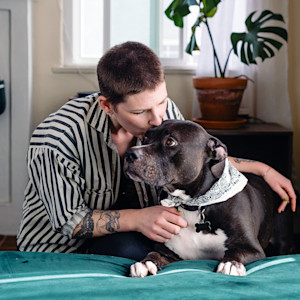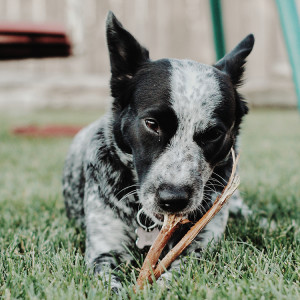Can Dogs Have Bell Peppers?
Yes, but there are a few ground rules you should know.

Share Article
In This Article:
Can Dogs Eat Bell Peppers? How to Feed Dogs Bell Peppers Alternatives to Bell Peppers
Known for their mild flavor, versatility, and colorful appearance, bell peppers are a staple in many households. We like them raw, sautéed, stuffed — you name it — and our dogs might like them, too. Fortunately, bell peppers of all colors are safe for dogs to eat in moderation, but there are a few things to consider before you start putting them into your pet’s bowl. Read on for more about how to feed your dog bell peppers.
Can dogs eat bell peppers?
Bell peppers are safe for dogs to eat in moderation. No matter the color, you can add small amounts to your dog’s diet for a bit of a vitamin boost.

Nutritional benefits of bell peppers for dogs
Bell peppers aren’t an empty-calorie snack for your pup — they can provide a good bit of nutrition. Bell peppers are high in vitamins C and E, which are antioxidants that promote healthy aging, including preventing some chronic diseases. They also contain good amounts of vitamin K for blood clotting and vitamin B6 for red blood-cell production. Red bell peppers contain plenty of vitamin A to aid in healthy vision.
Though high in vitamins, bell peppers are low in calories and fat, making them great treats for pleasantly plump pups.
Which types of bell peppers are safe for dogs?
All colors of bell peppers are nontoxic to dogs. This includes green (though these might be a little bitter and not your dog’s favorite), red, yellow, and orange.
You’ll want to leave hot peppers alone. Do not give your dog jalapeños, chili peppers, cayenne peppers, or anything else that makes you quickly reach for a glass of milk. These types of peppers contain capsaicin, which can be very irritating to your dog’s digestive tract, potentially causing lots of vomiting, diarrhea, and stomach pain.
Potential risks of feeding bell peppers to dogs
Bell peppers may be nutritious, but they aren’t meant to take up the majority of your dog’s diet. The high water and fiber content can bring on some nasty bouts of diarrhea and vomiting. Also, some dogs’ digestive systems just might not get along with bell peppers, so you’ll want to monitor your dog for signs of issues after feeding.
Signs of allergies or adverse reactions in dogs
Just because bell peppers are non-toxic doesn’t mean that every dog is going to be OK with eating them. Some may have issues. Watch your dog for signs of digestive upset, which can include vomiting, diarrhea, and not eating. These signs typically go away on their own within a day or two.
Signs of a more significant reaction could include itchy, rashy skin or digestive issues that don’t go away within a couple of days. If this happens, stop feeding bell peppers to your dog, and consult your veterinarian.
How to safely feed bell peppers to dogs
Your dog is either going to like bell peppers, or they’re not. So, there’s no need to dress up these veggies with seasonings, or cook them in butter or oil, in an attempt to get your dog to eat them. In fact, these extra seasonings or cooking additives can be dangerous. Food such as garlic and onion can be toxic if eaten in high enough quantities, and butter and oil provide unnecessary calories as well as the potential to create diarrhea and vomiting.
Instead, feed your dog plain bell peppers with the stems and seeds removed. Wash them thoroughly, and then cut them into bite-sized pieces. Your dog can have plain bell peppers that are cooked, but the raw version works just as well without the preparation.
Bell peppers shouldn’t make up the majority of your dog’s diet, so keep the amounts small. This means, every few days, feeding them a couple of pieces to one-fourth of a cup, depending on the size of your dog.
Alternatives to bell peppers for dogs
If bell peppers don’t tickle your dog’s taste buds, there are other healthy foods that your dog may prefer. Safe fruits and vegetables for your dog to eat include:
Green beans
Berries
Peas
Zucchini
No matter what your dog’s food of choice is, make sure to wash it well. Remove any seeds, pits, and the core, and feed it in moderation. Contact your vet before giving your dog anything besides dog food, to make sure it’s safe and healthy. Remember, dogs don’t need fruits or vegetables if they’re eating complete, balanced dog food. These are only meant for treats or special occasions.
Bottom line
Bell peppers can make a safe and healthy snack for dogs as long as they’re served plain and in moderation.
Feeding too many bell peppers can cause vomiting and diarrhea. Be sure to monitor your pup after giving them bell peppers to make sure the vegetable agrees with them.
If you have any questions about bell peppers or other human foods that you can safely give your dog, speak to your veterinarian.
References
“Nutritional Facts and Benefits of Bell Peppers.” Healthline. 1 Nov 2024. www.healthline.com/nutrition/foods/bell-peppersopens in new tab.

Dr. Chyrle Bonk, DVM
Dr. Chyrle Bonk has been a mixed-animal veterinarian since 2010, with a special interest in rehabilitation. When she's not practicing or writing about veterinary medicine, you may find her exploring the outdoors with her family or tending to her cows, horses, chickens, or cats and dogs.
Related articles
![Woman kisses her black pit bull dog on the head.]()
What Can I Give My Dog for an Upset Stomach?
It stinks to see them uncomfortable. Here’s what you can do.
![Dog in the grass outside chewing on a bully stick]()
Chew on This: A Guide to Safe and Not-So-Safe Dog Bones
Two experts—a veterinary dentist and internist—rate the most popular dog bones.
What Are the Best Dog Foods for Dogs With Sensitive Stomachs?
Find out what’s best for your pup.
![black and white dog looking ill laying on couch]()
Warning Signs Your Dog Needs to Go to the ER — Stat
Trust me, I’m a vet.
Can I Give My Dog Pepto Bismol?
No, Pepto Bismal is a medication that should not be given to dogs.







